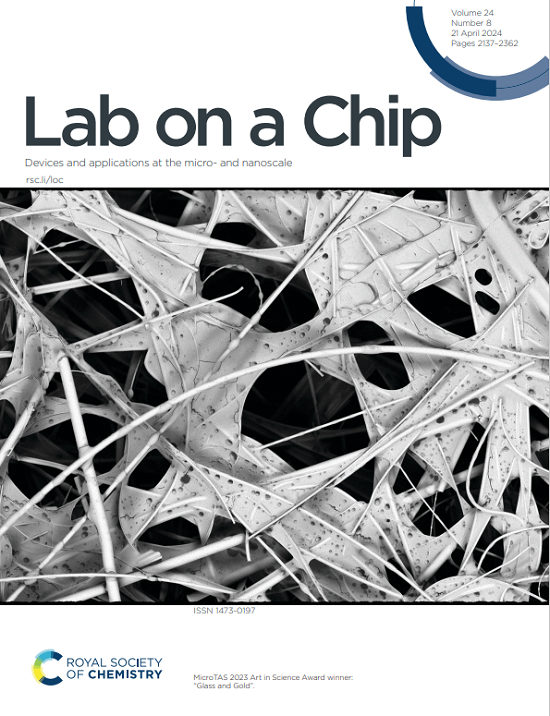Stimulus-Induced Mechanical Compaction of Biological Polymer Networks via Smart Hydrogel Microstructures
IF 5.4
2区 工程技术
Q1 BIOCHEMICAL RESEARCH METHODS
引用次数: 0
Abstract
The remodeling of the extracellular matrix by mechanical forces plays a crucial role in organizing cellular microenvironments. To study these mechanical perturbations, various methods have been developed to modify the cellular microenvironment and to apply controlled forces. However, most existing approaches rely either on instruments that cannot be integrated into lab-on-chip systems or on small probes with limited spatiotemporal precision. In this work, a lab-on-chip system enables spatially and temporally controlled mechanical perturbations of biological polymer networks. First, thermoresponsive hydrogel microstructures within flow chambers are fabricated and their material composition and photopolymerization parameters are optimized. Second, the expansion of hydrogel microstructures upon a temporally controlled temperature stimulus, results in compression of Matrigel and collagen networks. Following compression, Matrigel is plastically deformed, whereas the collagen network relaxes elastically. Finally, the compression of collagen networks is spatially modulated by integrating hydrogel structures responsive to light stimuli. By mimicking the pushing forces of cells that remodel biological polymer networks, the presented smart hydrogel microstructures provide a versatile system for future studies on extracellular matrix remodeling and the effects of mechanical forces on cellular microenvironments in both physiological and pathological contexts.通过智能水凝胶微结构刺激诱导生物聚合物网络的机械压实
机械力对细胞外基质的重塑在组织细胞微环境中起着至关重要的作用。为了研究这些机械扰动,已经开发了各种方法来修改细胞微环境并施加控制力。然而,大多数现有方法要么依赖于无法集成到芯片实验室系统中的仪器,要么依赖于时空精度有限的小型探针。在这项工作中,一个芯片实验室系统能够在空间和时间上控制生物聚合物网络的机械扰动。首先,在流动腔内制备热响应性水凝胶微结构,并对其材料组成和光聚合参数进行优化。其次,在暂时控制的温度刺激下,水凝胶微观结构的膨胀导致基质和胶原蛋白网络的压缩。在压缩之后,基质是塑性变形的,而胶原蛋白网络是弹性松弛的。最后,胶原蛋白网络的压缩是通过整合响应光刺激的水凝胶结构进行空间调节的。通过模拟重塑生物聚合物网络的细胞推力,所提出的智能水凝胶微结构为未来研究细胞外基质重塑以及生理和病理背景下机械力对细胞微环境的影响提供了一个通用系统。
本文章由计算机程序翻译,如有差异,请以英文原文为准。
求助全文
约1分钟内获得全文
求助全文
来源期刊

Lab on a Chip
工程技术-化学综合
CiteScore
11.10
自引率
8.20%
发文量
434
审稿时长
2.6 months
期刊介绍:
Lab on a Chip is the premiere journal that publishes cutting-edge research in the field of miniaturization. By their very nature, microfluidic/nanofluidic/miniaturized systems are at the intersection of disciplines, spanning fundamental research to high-end application, which is reflected by the broad readership of the journal. Lab on a Chip publishes two types of papers on original research: full-length research papers and communications. Papers should demonstrate innovations, which can come from technical advancements or applications addressing pressing needs in globally important areas. The journal also publishes Comments, Reviews, and Perspectives.
 求助内容:
求助内容: 应助结果提醒方式:
应助结果提醒方式:


